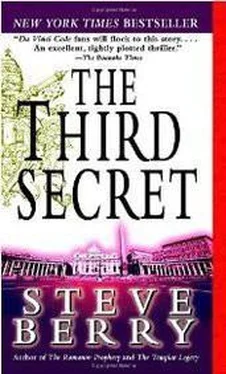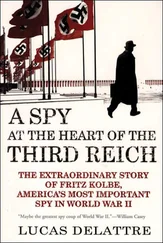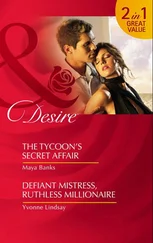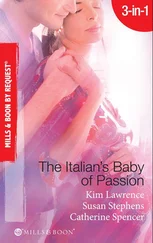He studied the cresting and buttresses of the iron grille, and the gilded frieze of foliage and animals hammered into the metal above. The gate itself had stood since the fourteenth century. Nothing in Vatican City was ordinary. Everything carried the distinctive mark of a renowned artist or a legendary craftsman, someone who’d labored for years trying to please both his God and his pope.
He strode across the room, his footfalls echoing through the tepid air, and stopped at the iron gate. A warm breeze swept past him from beyond the grille. The right side of the portal was dominated by a huge hasp. He tested the bolt. Locked and secure.
He turned back, wondering if one of the staff had entered the archives. The duty scriptor had departed when he’d arrived earlier and no one else would be allowed inside while he was there, since the papal secretary needed no babysitter. But there were a multitude of doors that led in and out, and he wondered if the noise he’d heard moments ago was that of ancient hinges being worked open, then gently closed. It was hard to tell. Sound within the great expanse was as confused as the writings.
He stepped to his right, toward one of the long corridors—the Hall of Parchments. Beyond was the Room of Inventories and Indexes. As he walked, overhead bulbs flashed on and off, casting a succession of light pools, and he felt as if he were underground, though he was two stories up.
He ventured only a little way, heard nothing, then turned around.
It was early in the day and midweek. He’d chosen this time for his research deliberately—less chance of impeding others who’d gained access to the archives, and less chance of attracting the attention of curial employees. He was on a mission for the Holy Father, his inquiries private, but he was not alone. The last time, a week ago, he’d sensed the same thing.
He reentered the main hall and stepped back to the reading desk, his attention still on the room. The floor was a zodiacal diagram oriented to the sun, its rays able to penetrate thanks to carefully positioned slits high in the walls. He knew that centuries ago the Gregorian calendar had been calculated at this precise spot. Yet no sunlight leaked in today. Outside was cold and wet, a midautumn rainstorm pelting Rome.
The volumes that had held his attention for the past two hours were neatly arranged on the lectern. Many had been composed within the past two decades. Four were much older. Two of the oldest were written in Italian, one was in Spanish, the other in Portuguese. He could read all of them with ease—another reason Clement XV coveted his employment.
The Spanish and Italian accounts were of little value, both rehashes of the Portuguese work: A Comprehensive and Detailed Study of the Reported Apparitions of the Holy Virgin Mary at Fatima–May 13, 1917, to October 13, 1917.
Pope Benedict XV had ordered the investigation in 1922 as part of the Church’s investigation into what supposedly had occurred in a remote Portuguese valley. The entire manuscript was handwritten, the ink faded to a warm yellow so the words appeared as if they were scripted in gold. The bishop of Leira had performed a thorough inquiry, spending eight years in all, and the information later became critical in the 1930 acknowledgment by the Vatican that the Virgin’s six earthly appearances at Fatima were worthy of assent. Three appendices, now attached to the original, had been generated in the 1950s, ’60s, and ’90s.
Michener had studied them all with the thoroughness of the lawyer he’d been trained by the Church to be. Seven years at the University of Munich had earned him his degrees, yet he’d never practiced law conventionally. His was a world of ecclesiastical pronouncements and canonical decrees. Precedent spanned two millennia and relied more on an understanding of the times than on any notion of stare decisis. His arduous legal training had become invaluable to his Church service, as the logic of the law had many times become an ally in the confusing mire of divine politics. More important, it had just helped him find in this labyrinth of forgotten information what Clement XV wanted.
The sound came again.
A soft squeak, like two limbs rubbing together in a breeze, or a mouse announcing its presence.
He rushed toward the source and glanced both ways.
Nothing.
Fifty feet off to the left, a door led out of the archive. He approached the portal and tested the lock. It yielded. He strained to open the heavy slab of carved oak and the iron hinges squealed ever so slightly.
A sound he recognized.
The hallway beyond was empty, but a gleam on the marble floor caught his attention.
He knelt.
The transparent clumps of moisture came with regularity, the droplets leading off into the corridor, then back through the doorway into the archive. Suspended within some were remnants of mud, leaves, and grass.
He followed the trail with his gaze which stopped at the end of a row of shelves. Rain continued to pound the roof.
He knew the puddles for what they were.
Footprints.
TWO
7:45 A.M.
The media circus started early, as Michener knew it would. He stood before the window and watched as television vans and trailers eased into St. Peter’s Square and claimed their assigned positions. The Vatican press office had reported to him yesterday that seventy-one press applications had been approved for the tribunal from North American, English, and French journalists, though there were also a dozen Italians and three Germans in the group. Most were print media, but several news outlets had asked for and were granted on-site broadcast permission. The BBC had even lobbied for camera access inside the tribunal itself, part of a documentary it was preparing, but that request was denied. The whole thing should be quite a show—but that was the price to be paid for going after a celebrity.
The Apostolic Penitentiary was the senior of three Vatican tribunals and dealt exclusively with excommunications. Canon law proclaimed five reasons a person could be excommunicated: Breaking the confidentiality of the confessional. Physically attacking the pope. Consecrating a bishop without Holy See approval. Desecrating the Eucharist. And the one at issue today—a priest absolving his accomplice in a sexual sin.
Father Thomas Kealy of St. Peter and Paul Church in Richmond, Virginia had done the unthinkable. Three years ago he’d engaged in an open relationship with a woman, then in front of his congregation he’d absolved them both of sin. The stunt, and Kealy’s scathing comments on the Church’s unbending position regarding celibacy, had garnered a great deal of attention. Individual priests and theologians had long challenged Rome on celibacy, and the usual response was to wait the advocate out, since most either quit or fell into line. Father Kealy, though, took his challenge to new levels by publishing three books, one an international best seller, that directly contradicted established Catholic doctrine. Michener well knew the institutional fear that surrounded him. It was one thing when a priest challenged Rome, quite another when people started listening.
And people listened to Thomas Kealy.
He was handsome and smart and possessed the enviable gift of being able to succinctly convey his thoughts. He’d appeared across the globe and had attracted a strong following. Every movement needed a leader, and church reform advocates had apparently found theirs in this bold priest. His website, which Michener knew the Apostolic Penitentiary monitored on a daily basis, scored more than twenty thousand hits a day. A year ago Kealy had founded a global movement, Catholics Rallying for Equality Against Theological Eccentricities—CREATE—which now boasted over a million members, most from North America and Europe.
Читать дальше












